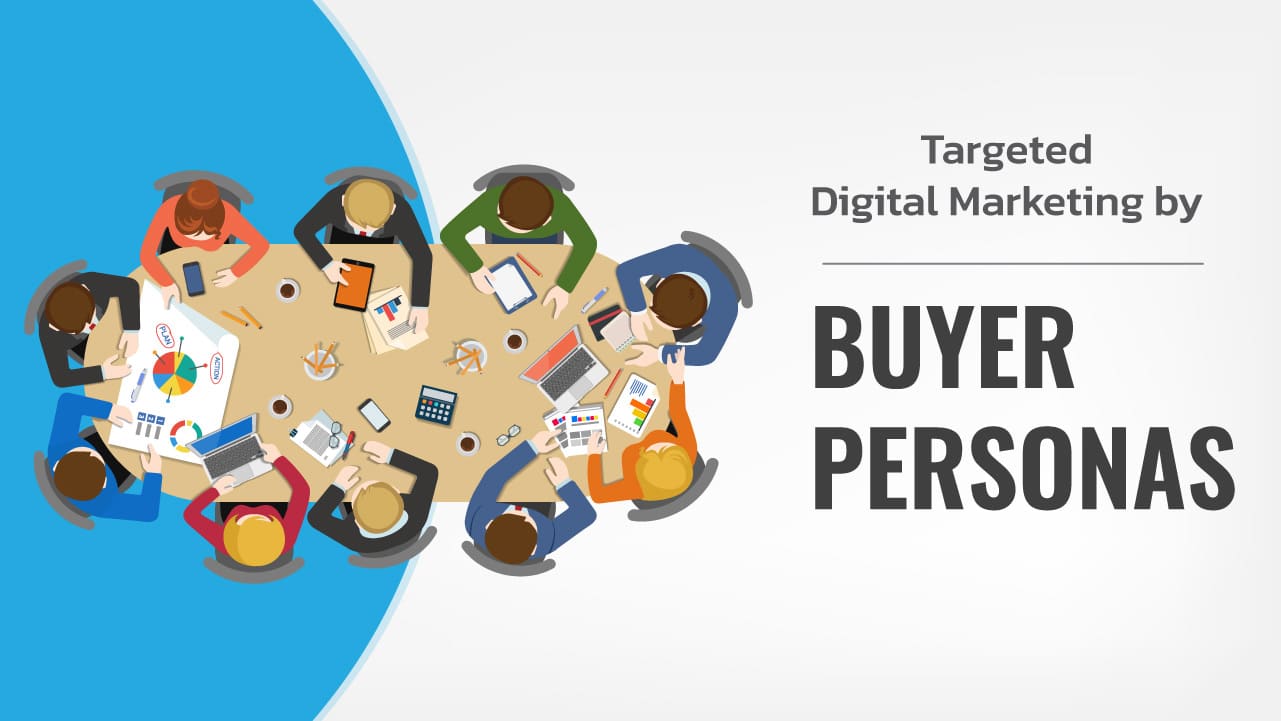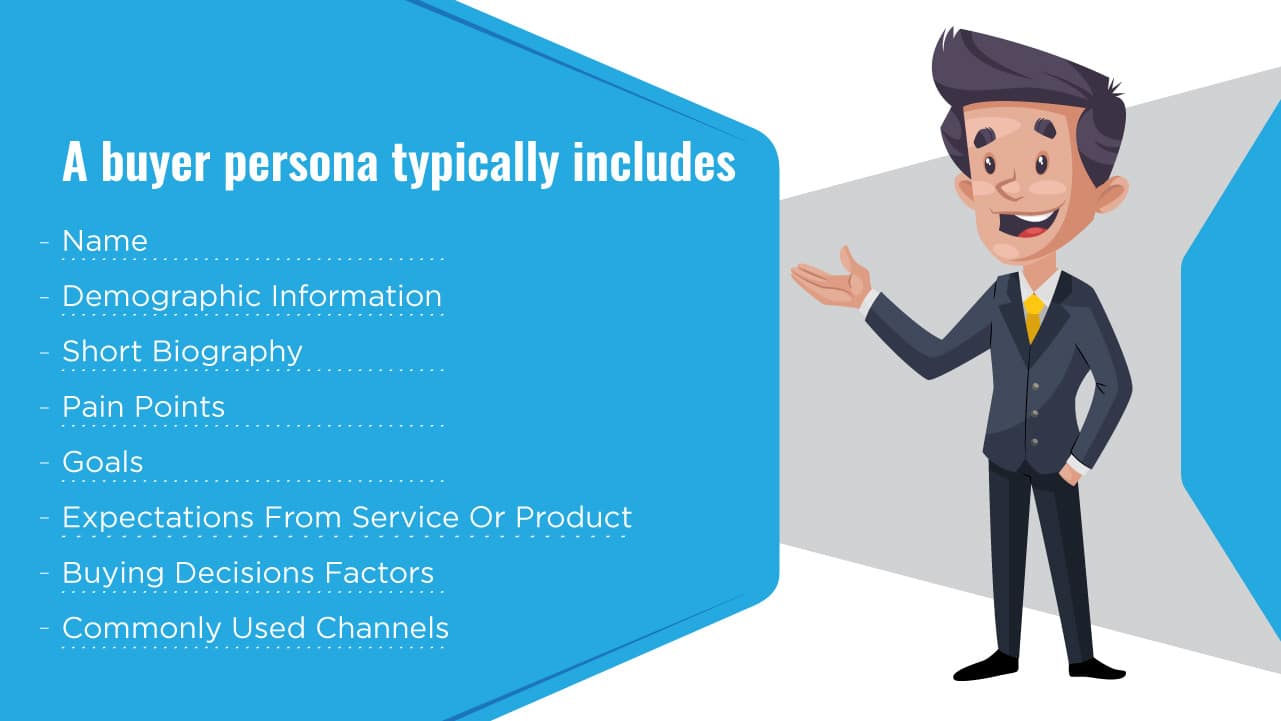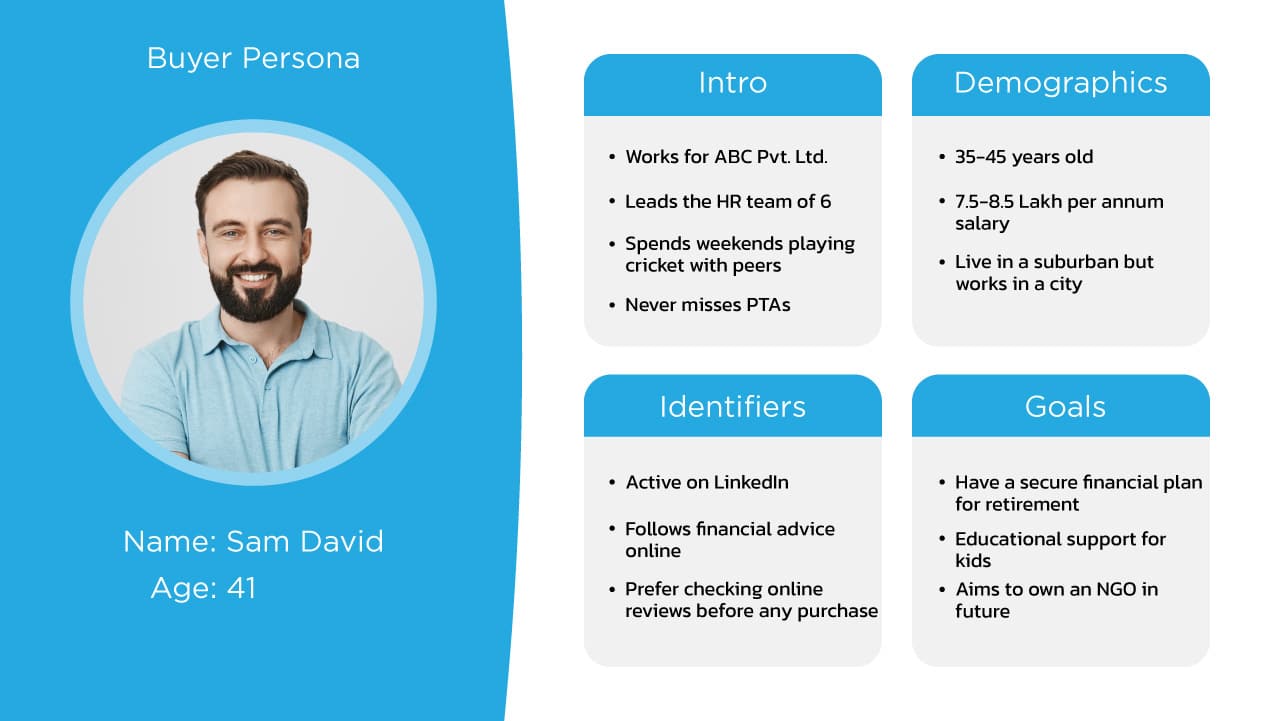Targeted Digital Marketing by Buyer Personas

“Is your buyer persona ready?” “Plan a buyer persona.” “Share the product’s buyer persona.” This word is nothing new in a digital agency. But what is the buss about this word? Let’s take this buzzword in laymen’s terms.
An imaginary depiction of your ideal customer or target market is a buyer persona. It is simpler to create successful, focused content that speaks to this buyer’s goals and challenges when you have a clear understanding of who you’re marketing. Most companies have several buyer personas, each elaborating on the influencing factors of a customer’s decision to purchase a good or service. It includes the person’s age, location, job description, objectives, and difficulties they face. The success of continuing marketing relies on buyer personas. They also describe the purchasing habits of your clientele. It comprises the motivations behind their purchases of your goods or services and an understanding of how they make decisions and make purchases.
A buyer persona typically includes
- Name
- Demographic Information
- Short Biography
- Pain Points
- Goals
- Expectations From Service Or Product
- Buying Decisions Factors
- Commonly Used Channels
Well, we understood the concept. But why is such hype? Why is this concept so important? What role does it play in your marketing strategies? In short, why is buyer persona Important?
Think of your buyer personas as a biography of a person. You are creating a narrative setting for the people most interested in your product or service. To be able to offer individualized service, pertinent material, and sales information, you want to learn as much as you can about them. A buyer persona is the greatest place to put all that information together into a narrative that will appeal to your brand.
Creating buyer personas is a difficult and cumbersome task. But divide the process into small parts, and go through them individually, one at a time. Ensure you cover all bases gradually will prevent you from feeling overly overwhelmed. This buyer persona definition guide makes you understand that you can leave and return whenever it’s most convenient.
What is the use of the Buyer Persona?
With so much explanation, we hope that the concept of the Buyer Persona is clear. A brand must create buyer personas to improve cross-departmental alignment and acquire customer insights. As a result, all aspects of marketing, sales, product development, and customer service will work jointly, guided by your ideal customer’s perspective.
- Product Roadmaps: The buyer personas can be used by the product development team to identify and prioritize modifications to the goods. This will make it easier to serve them effectively. Who among customers wouldn’t want a solution that could solve all of their issues at once?
- Promotional Campaigns: If you are aware of your ideal customer profile, you may run more targeted social media ads, conserve resources, and boost the likelihood of receiving more click-through rates. You can use buyer personas to develop segmentation lists for email marketing campaigns that allow for seasonal and individualized targeting. Use an email marketing platform with lots of features if you want to send targeted emails without any effort. Understanding the tastes, passions, and preferences of your target market will help you draw in and keep customers.
- SEO & PPC: The best and most effective approach to leverage buyer personas is this. Any digital marketing strategy’s backbone is SEO, which gives a company the visibility, traffic, and rating it needs. The buyer personas are helpful for both keyword research and copywriting. Along with improving SEO, it aids in the creation of problem-solution content for organizations. When planning sponsored advertising, pay-per-click is essential for boosting your brand’s visibility, presence, and conversion rates. It is crucial for lead creation as well. By launching advertising campaigns with specific themes and styles to connect with different sorts of potential clients, buyer personas assist firms in achieving their objectives.
Well, surely the buyer persona seems to be important. Quite important. By now, we are sure that you have made up your mind to make your brand’s buyer persona. But again, how to build a buyer persona?
The concept of the buyer persona is not complex, and so is the process of building it. To create a persona, you must first ask yourself probing questions about your potential clients. Just doing this can help you become aware of new information. Your customer persona should be built on actual data and strategic objectives, not just on someone you want to buy your product/service. Here’s how to create a frictional character perfectly representing your actual customer.
The best way to build a customer persona is by interacting directly with the customers. Your internal team’s information can be a good start to understanding your consumers. But talking to them is the only way to genuinely get into their brains. Interview actual customers to verify your assumptions after getting data from your sales and marketing departments. Refining content and marketing messages involve asking questions that assist you to comprehend your audience’s behaviour and the difficulties they confront. Persona development can be compared to the scientific approach. Personas’ hypotheses are formed in part by the dialogues you have with yourself. Customers can help you evaluate your theory critically and see whether you can support or refute it. Utilize this data to customize your goods and services for various personas. If not asked, you won’t know what people want or don’t want. Your goal is to comprehend consumer behaviour. It will help you create interview questions to create a thorough persona profile.
Don’t concentrate on just one client persona; consider the entire range of consumer kinds. The ideal interviewee should fit one of the following criteria:
- People who have opted to purchase your product
- People who have decided against purchasing your product
- Consumers who made competitive purchases
Because they have completed the purchasing process, these clients can be more explicit about how they assessed your product. They can reveal information about their sentiments, both favourable and unfavourable, regarding your rivals. They can then go into depth about each stage of the decision-making process and the tools employed.
Questions You Should Consider While Developing Buyer Personas
- Demographic:
- What is your marital status?
- What is the average salary in your family?
- Do you own your home?
- What gender are you?
- What age are you?
- Have you got kids?
- Professional:
- What field do you work in?
- What is your current level of employment?
- What employment do you desire?
- How long have you held this position now?
- What degree of education do you have?
- Day-to-Day:
- What does your day entail?
- What is your work-life balance?
- What do you enjoy doing?
- What are the people who matter most to you in your life?
- What kind of cars do you drive, and why?
- What programs do you watch on TV?
- Buying Behaviour:
- Where do you turn to find out more about a good or service?
- What offline tools do you employ?
- What sources do you use online?
- Which store do you prefer?
- How would you like to communicate with vendors?
- Who do you turn to for suggestions on goods or services?
- How crucial is finding a good deal?
- Which mobile phone models do you own?
- What kind of lavish or indulgent purchases do you make?
- Customer Pain point:
- What part of your day do you find the most frustrating?
- Which of your past experiences with customer service was the worst?
- What routine task do you find challenging?
- What stresses you out?
- What can someone do to enrage you the quickest?
- What could be the worst job?
- What sub-X dollar purchase do you regret the most?
- What causes you concern?
- There are two types of information to take into account while developing buyer personas:
- 1. Qualitative information gathered through internal and client interviews
- 2. Concrete data gathered through online tools
There are several tools available that may be utilized to improve persona development and analyse data. You can use buying intent to speed up the process of creating personas. Buying intent can take the form of product demo requests, engagement rates, and email-open rates. It enables businesses to comprehend the rationale behind customers’ content selections. Whatever the case, it’s critical that your data highlight the traits that people share.
A sample Buyer Persona
Name: Sam
Intro:
- Works for ABC Pvt. Ltd.
- Leads the HR team of 6
- Spends weekends playing cricket with peers
- Never misses PTAs
Demographics:
- 35-45 years old
- 7.5-8.5 Lakh per annum salary
- Live in a suburban but works in a city
Identifiers:
- Active on LinkedIn
- Prefer checking online reviews before any purchase
- Follows financial advice online
Goals:
- Have a secure financial plan for retirement
- Educational support for kids
- Aims to own an NGO in future
How to leverage a customer persona?
Buyer personas should be leveraged by marketing, sales, and support to maximize your efforts. Let’s discuss how sales and support can utilize buyer personas as we’ve primarily concentrated on marketing ahead.
- Sales: Your sales staff may validate personas and suggest improvements to marketing because it interacts directly with customers. Sales employ personalities to interact with contacts, whereas marketing uses them to draw in the proper customers. Persona knowledge fills in the blanks so that sales representatives may be more helpful, provide value more rapidly, and avoid wasting the time of contacts with unrelated information. By creating personas, sales teams may customize their outreach efforts to each lead’s preferences such as text messages; phone calls; or long, detailed emails. Personas also show whether you have any contacts in common and how you can use these connections to speed up the sales process.
- Customer Support: Your customer support team can use personas, like the sales team, to confirm a prospect’s values and communication preferences. The support team can go a step and work with product development. Your product teams can then design features based on personas. Think about the most recent features or items you’ve developed. Consider whether you’re focusing too much on tailoring your offerings to a particular persona. Personas are ultimately the lifeblood of your business, impacting everything from product creation to customer service to sales.
- Content Development: Writing content that appeals to buyer personas is one thing; creating them is another. Not every blog article you draft needs to be tailored to a specific persona. To tailor precise content to each customer profile, you need buyer personas. A blog article may occasionally appeal to several personas, but you don’t have to make that your goal. Solving particular issues requires writing to personas. For instance, when writing a blog post, you should ensure a title that will compel a certain audience to read your work. Do some research on the long-tail keyword that best fits your profile and the title you are considering. You may considerably improve your search engine optimization and content development by learning the words or phrases that people use to describe their concerns. Do this by deciding on an engaging title with a long-tail keyword to focus on and identifying queries or problems that your persona may want to resolve. It’s crucial to address your intended audience directly. Create content that appeals to their hobbies and fits your persona. It enables you to write about more specific topics. Use phrases that your characters will recognise and modify your language accordingly.
You will be able to communicate with your customers more effectively the more you know about them. Creating personas is a low-cost approach that will help you maximise the use of your inbound marketing budget.
Every marketer is aware of the significance of increasing campaigns’ return on investment. Making ensuring that everyone in your organisation is on the same page is crucial. As we’ve shown, using buyer personas will improve not only your inbound marketing strategies, sales process, customer service, and product development. At every stage of an eCommerce business, from product development to content creation to SEO specialists, digital marketers, and even business owners, buyer personas are essential.
Your efforts and money may very well be wasted if you don’t have a good understanding of your target market. It follows that you and every member of your team must comprehend the complexity of your clients if you want to differentiate yourself from your rivals. Additionally, strive to satisfy their preferences for the product or the content. Visit our website for information about eCommerce digital marketing tactics and other fascinating stuff.





